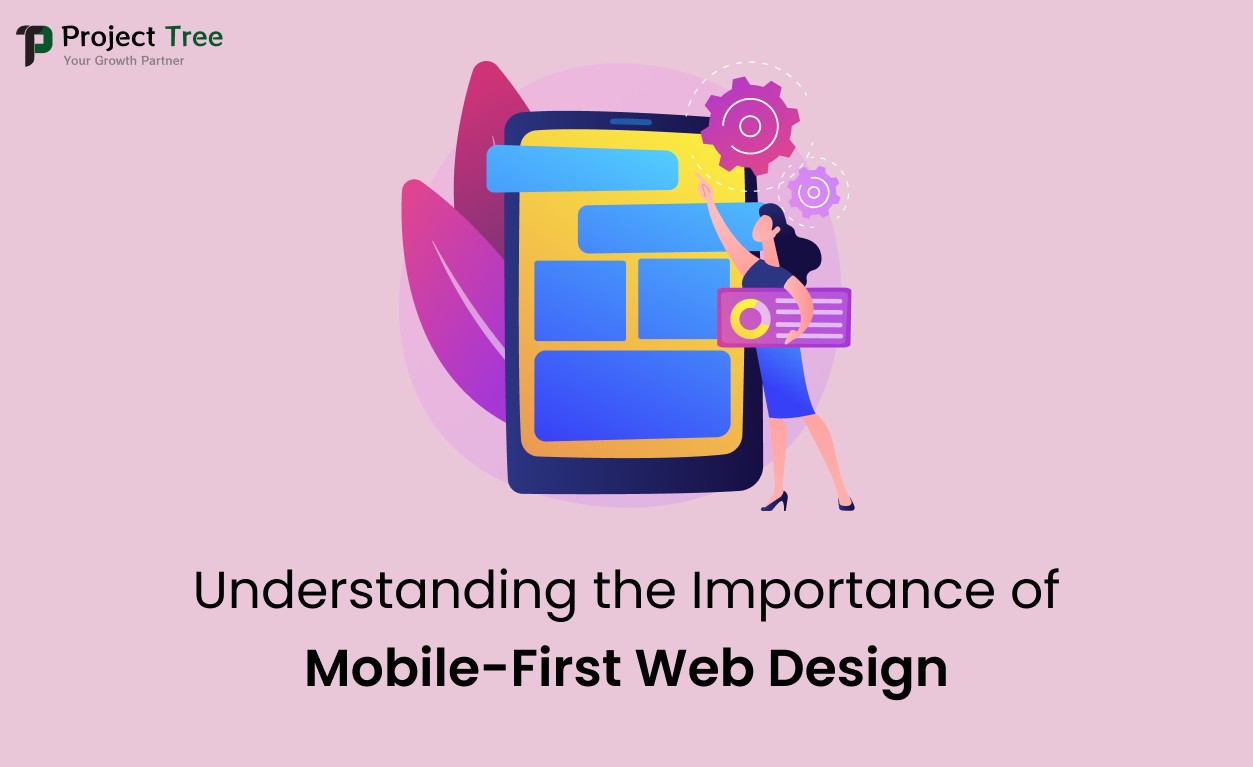The foundation for creating efficient and easy-to-use websites in today’s digital world is a mobile-first design. Emphasizing mobile-first web design strategy grows increasingly important as more individuals use the web via mobile devices. Through employing this method, websites are sure to be made for smaller shows before they are scaled up to larger sizes. This approach is crucial to improving customer satisfaction, improving search engine positions, and encouraging business growth.
What is Mobile-First Web Design?
A mobile-first web development strategy begins the development process on a tiny screen size, which is generally a cell phone. Developers start using mobile and expand to fit bigger displays, as compared to beginning on the computer before scaling down. This approach ensures that the internet site works perfectly on mobile devices, giving users an effortless visit on any device.
Why Mobile-First Matters
The shift to designing mobile apps for speed and performance devices is not a trend; it’s a response to user behavior. An important portion of the population is going to interact with sites on their phones as the use of mobile internet grows. A website that cannot be mobile-friendly could offer an inadequate user experience, pulling users away and damaging the image of a company.
The importance of mobile-first Web Design has been further focused on by Google’s algorithm improvements. Google launched its mobile-first indexing system in the year 2018, which means that while ranking and indexing a website, the search engine looks first at the mobile version of the website. Website contact and traffic could be reduced by a decline in search engine ranks for non-mobile-friendly content.
Enhanced User Experience
The user experience can be improved by mobile-first design. A website that emphasizes responsive design tends to appear simpler, focusing on function and important information. People find it simpler to use because of this simplicity. Each Pixel counts on a small screen, and the mobile-first AI transforming web design makes certain that the available room is used properly.
A responsive web design that changes for various screens is essential. But starting with the cell phone version, make sure all of the essential elements come immediately. Customers are less likely to have problems using sites that aren’t optimized for mobile devices, such as slow pages or difficult usability.
Performance and Speed

Better performance is among the many benefits of developing for mobile devices first. In comparison with users of desktops, users of mobile devices tend to have lower connections to the internet. A website that follows the mobile-first web design approach generally loads quicker since it is smaller and needs fewer assets to load.
If a web page takes at least three seconds for it to load, 53 percent of mobile users leave, per Google’s research. Developers may reduce bounce rates and increase user engagement by focusing on mobile-first layouts and developing fast-loading websites.
SEO Benefits
Websites built for mobile devices are more likely to appear higher in results for searches based on Google’s mobile-first indexing, as previously reported. But the index is not the only benefit. Increased engagement indicators, such as fewer bounces and higher hours spent on the web page, are more likely frequently seen on a mobile-first page. Google considers such metrics seriously when ranking websites.
Also, techniques like flexible layouts, proper optimization of images, and simple code—all that significantly enhance SEO performance—are frequently integrated into the mobile-first design.
Accessibility and Inclusivity
The mobile-first design also seeks to keep the web visible to as many people as possible. A great deal of consumers use their mobile devices as the primary, or even just connection to the internet. It’s particularly accurate in regions where desktop technology is not as common as mobility technology.
Businesses that focus on mobile design can guarantee that their websites are available to a larger audience. Besides being wise financial practice, this openness additionally makes logic. So possess greater potential customers as more individuals can browse and benefit from your web page.
Adaptation to User Behavior
Mobile-first design is a response to such changes in user usage, which is still developing. People use their phones for a variety of uses, such as using social media, viewing media, and purchasing. Due to the shift in conduct, sites now need to satisfy these requirements by providing an effortless mobile experience.
E-commerce websites with a mobile-first design, for instance, may decrease the frequency at which shopping carts are left. Based on a Baymard Institute study, an inadequate user interface leads 70% of mobile consumers to abandon their shopping baskets. Companies can make buying easier for consumers while motivating people to complete what they buy by placing an intense focus on a mobile-first web design strategy.
Competitive Advantage
In a competitive digital marketplace, identifying out is essential. A competitive edge can be earned by groups with an effective mobile-first design. Choosing mobile clients is likely to result in higher participation, improved conversion rates, and increased satisfaction for companies.
A satisfying mobile experience continues to be avoided by numerous websites. The difference provides an opportunity for businesses to establish themselves apart. With the introduction of a mobile-first approach, companies can establish an image for being user-centered, creative, and informed of market changes.
Future-Proofing Your Website
The way people connect with the web has evolved along with technology. The objective of a mobile-first approach is to secure the site in addition to keeping into consideration the latest developments. Websites constructed according to the “mobile devices first” web design approach are going to be better able to adjust to new sizes of screens, equipment, and consumer demands as mobile technology develops.
Making decisions in mobile-first design now ensures that your online presence is still helpful and timely years hence today. It all comes back to establishing a solid basis that will evolve alongside the digital landscape.
Conclusion
At ProjectTree, mobile-first web design is presently required; it’s no longer possible. Companies need to pay attention to mobile users if they are to stay profitable, as mobile devices represent the bulk of internet traffic. Websites with a mobile-first layout are easier to access, perform better, boost SEO, and improve user experience. Companies may make sure that their internet properties are ready for today and tomorrow by implementing this strategy.
Together, ProjectTree and DrPro offer a powerful integration that enhances productivity and effectiveness across project management and healthcare sectors.
FAQs
What is mobile-first web design?
A focus on mobile devices web design strategy starts the development process with the lowest size of the screen, which is usually comparable to a cell phone. After that, the layout is expanded for bigger screens, ensuring the best potential user experience as well as efficiency on mobile devices.
Why is mobile-first web design important for SEO?
Google employs mobile-first indexing, which means that while ranking and indexing a website, it looks initially at its mobile-friendly version. A responsive website may result in improved engine ranks and greater visibility.
How does mobile-first design improve user experience?
Having a focus on vital content and simplicity, the mobile-first design improves the user experience by facilitating quicker and simpler looking for users on handheld devices.
Can mobile-first design benefit my business?
Yes, an effective mobile-first design can improve user engagement, increase the rate of conversion, and give your business an edge in a crowded online market.
What are the performance benefits of mobile-first design?
Websites that emphasize mobile devices tend to be smaller and load quicker, which matters for users with slower connections. More quickly loaded times improve customer satisfaction and decrease the rate of bounces.

